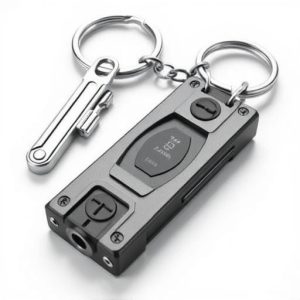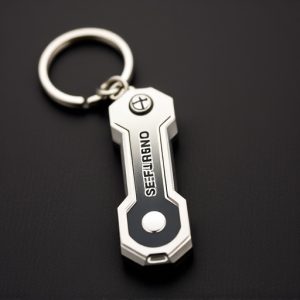Non-Lethal Keychain Weapons: Legal, Design, Benefits, and Safety Guide
Non-lethal keychain weapons, governed by local self-defense laws, offer compact legal protection. Bl…….
Non-lethal keychain weapons, governed by local self-defense laws, offer compact legal protection. Blunt force techniques are generally more allowed than electrical or chemical methods. Users must research local regulations, understand force reasonsableness, and prioritize traditional self-defense training. These tools should be used responsibly, only for imminent harm, with proper care to maintain effectiveness.
“Unveiling the potential of non-lethal keychain weapons, this article explores their role in personal defense. With a focus on legal aspects, we delve into the design and features that make blunt force keychains effective yet safe tools. From self-defense considerations to training requirements, readers will discover the benefits and limitations of these compact devices. Understanding when and how non-lethal keychain weapons are allowed can empower individuals to make informed choices for their safety.”
- Understanding Non-Lethal Keychain Weapons: A Legal Perspective
- Design and Features of Blunt Force Keychain Devices
- Benefits and Considerations for Self-Defense with Keychains
- Safety and Training: Responsible Use of Keychain Weapons
Understanding Non-Lethal Keychain Weapons: A Legal Perspective
In many jurisdictions, non-lethal keychain weapons, also known as personal defense tools, are subject to specific legal frameworks. The legality and regulation of these devices vary widely across countries and even within regions of the same country. Generally, non-lethal keychain weapons that employ blunt force techniques, such as those designed to disrupt an assailant’s balance or cause temporary pain without severe injury, are more commonly allowed compared to those using electrical or chemical means. This is largely due to their lesser potential for causing permanent harm.
When considering the legality of non-lethal keychain weapons, several factors come into play. These include the specific laws regarding self-defense and the level of force deemed reasonable in a given jurisdiction. Additionally, some regions have strict regulations on the type, size, and strength of such devices to ensure public safety. It’s crucial for individuals interested in purchasing or carrying these tools to research and understand their local laws to ensure compliance, thereby avoiding potential legal repercussions.
Design and Features of Blunt Force Keychain Devices
Blunt force keychains, also known as non-lethal keychain weapons, are designed to provide individuals with a means of self-defense in various situations. These compact devices typically feature a small, ergonomic grip that fits comfortably in one’s hand or can be attached to a keychain for easy carrying. The core mechanism involves a strike pad or impact surface that is pressed against an opponent, causing temporary disorientation and pain without inflicting serious harm.
Key features include adjustable force levels, allowing users to customize the intensity of the impact based on their comfort level and the situation at hand. Some models incorporate advanced materials like high-strength polymers and metal alloys to ensure durability and reliability. Additionally, many blunt force keychains come with built-in flashlights, enhancing their functionality during low-light conditions or emergencies. These devices are often legal in many jurisdictions, making them a viable option for personal safety while adhering to regulations regarding non-lethal weapons.
Benefits and Considerations for Self-Defense with Keychains
For those seeking additional protection, keychains with blunt force tips offer a discreet and non-lethal self-defense option. These compact tools are designed to deter potential attackers and provide users with a sense of security while going about their daily lives. One significant advantage is their legality; unlike many other self-defense weapons, non-lethal keychain weapons are allowed in most public spaces, ensuring accessibility for those who need it most.
When considering such keychains, weight the benefits against potential drawbacks. While they may be effective in certain situations, they might not replace traditional self-defense training or emergency preparedness plans. Comfort and proficiency in using these devices are essential; users should practice and familiarize themselves with their keychain’s functionality to ensure its effectiveness during an actual emergency.
Safety and Training: Responsible Use of Keychain Weapons
In today’s world, personal safety is a top priority, and non-lethal keychain weapons are becoming increasingly popular as a means of self-defense. However, with great power comes great responsibility. It’s crucial to remember that these tools should only be used in situations where physical harm is an imminent threat. Training is essential to ensure users understand the proper handling and application of their keychain weapon. Responsible use involves practicing situational awareness, understanding legal implications, and knowing when to deploy the device effectively without causing unnecessary injury.
Many countries have specific regulations regarding non-lethal weapons, including restrictions on who can possess them and under what circumstances they can be used. Users must stay informed about local laws to avoid legal repercussions. Additionally, proper storage and care of the keychain weapon are vital to maintain its effectiveness and ensure it remains a reliable tool for personal safety when needed.
In conclusion, non-lethal keychain weapons, when allowed by law, can offer individuals an additional layer of personal protection. With proper design and safety considerations, these devices provide a convenient and discreet self-defense option for those in need. Understanding the legal aspects and benefits is crucial before considering any such tool, ensuring its responsible use aligns with local regulations.


